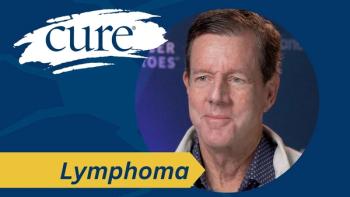
Cancer: Side Effects After the Cure
The battle does not always end with the word.
My sister was a far too young (27 years old) when she was diagnosed with Hodgkin lymphoma in July 2014. She fell into the peak range for diagnosis, with the rarity of just 9,000 new cases a year. Most patients are between 15 and 40 years of age. Luckily, we were told, her chances of survival were great. Hodgkin lymphoma has a remarkable cure rate of 80 percent, although it varies by stage. With her being in stage 4 at diagnosis, her chance was roughly 65 percent.
A CT scan showed that it was more aggressive than originally thought, and she began what would be one of many chemotherapy treatments. Many complications ensued and she would eventually refract, suffer metastasis and need a bone marrow transplant to gain the remission that was supposed to be so attainable upon diagnosis.
While most patients do gain a cure with first-line treatments, those like my sister, who relapse, face far worse outcomes. They fall into a salvage therapy category, followed by a high-dose chemotherapy, which then must be followed by bone marrow or stem cell transplant. It has significantly improved the cure rate of refractory or relapsed Hodgkin lymphoma, but that, too, can come with a cost to the patient’s well-being.
Every treatment that she has received has riddled her body nearly as much as the cancer has. As each dark turn occurred, it was never a matter of “should we.” To Kat, being here was what she wanted, and quality of life was not anywhere in her realm of thinking. Because to her, it did not matter how she was here, just that she was here was enough.
The list of the possible side effects of treatment for Hodgkin lymphoma is long, and these effects can be caused by a number of the agents prescribed to patients. As she is now in remission, we are battling to solve other problems. All of the complications that she has and all the side effects that plague her now need to be addressed. Sadly, she has faced many of them, no matter how rare or common they may be.
The chemotherapy bleomycin has shown to cause a side effect in the lungs that induces a pneumatic reaction in the body. This kind of toxicity is seen in about 10 to 25 percent of patients. Platinum-based agents are being fazed out in favor of less drastic combinations or therapies, but the damage that drugs such as cisplatin cause is wide-ranging. Kidney damage and seizures occur far more than most realize. When given the monoclonal antibody/chemotherapy combination drug Adcetris (brentuximab vedotin), increased risk of neuropathy, depression and heart conditions are also commonly seen. A rare occurrence is photophobia and early menopause. My sister suffered all of these.
As she faces all of these immediate symptoms, my mind can not help but to ponder what the future holds. The increased risk of a secondary cancer among Hodgkin lymphoma has been estimated to be significantly higher than those who have never been afflicted. In particular, women who are treated with radiation in their cores face a higher risk for breast cancer.
As a young woman, my sister faced the hard reality of what these treatments mean in terms of infertility. Radiation can cause infertility, just as platinum-based regimens and the treatments that are required for stem cell transplantation. Though harvesting is sometimes offered, it was not for her. She was simply so far along in the disease process that there was not time afforded to even discuss these options.
Although we cannot put a specific number on her chance for a secondary cancer, she can do things that may better her odds, like not smoking and avoiding those who do, staying active in not just her body, but through her mind, eating healthy and seeking less-processed foods that are more natural and low in sugars. Because her cancer was in her spleen, she may always be at a higher risk for infection and illness since the spleen plays a role in the immune systems overall functioning.
With monoclonal antibodies like Adcetris that target a specific protein on a cancer cell, or the immunotherapy Opdivo (nivolumab) being looked at in clinical trials as a possible treatment for the disease, we need to remember that they, too, may come at a cost. My sister was given both, and many of her side effects were from these agents.
In terms of both new and old, we still have a long way to go in figuring out what works best for a given patient. Sadly, until that time comes, the fear of recurrence and a secondary cancer is paralyzing. It seems to undermine the long-term quality of life and survival that she has fought so hard for these last two years.
Only time will tell how effective these drugs prove to be in aiding the ever-desired cure of those with cancer. To me, a family member who has sat by and watched what happens to the patient, we need to be working concurrently to treat the complications as they come. We should not wait and hope that one is not affected, but be proactive to prevent side effects as we try to be cautious with the agents that cause them.




